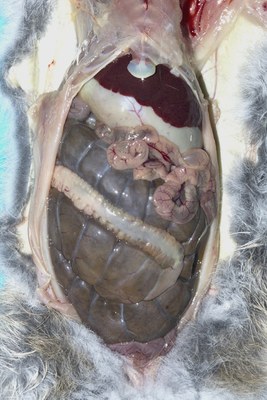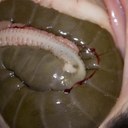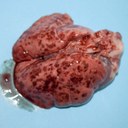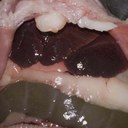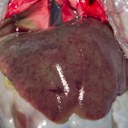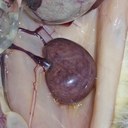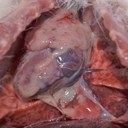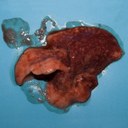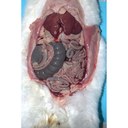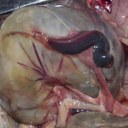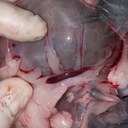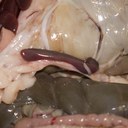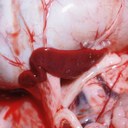Macroscopic findings of RHD during post-mortem examination
A diagnosis of RHD cannot be made from macroscopic examination alone. Histopathology is necessary. In many cases, the macroscopic appearance of the internal organs does not match the histopathological changes (Harcourt-Brown et al. 2020). Macroscopic lesions of RHD may be subtle (as in the above photo), variable, or absent although some findings are highly suggestive of RHD. These include:
- Blood-stained fluid at nares
- An enlarged pale or congested, mottled liver.
- An enlarged spleen.
- Pulmonary haemorrhage and oedema that may extend into the trachea so it is filled with a foamy exudate that may be blood-stained.
- Free blood in the abdomen or retroperitoneal spaces.
- Ecchymotic haemorrhages on the serosal surfaces or in the lungs.
- Petechiae may be seen in the muscles, including the heart.
- Icterus may be evident on the pinnae or sclera. NB: Yellow fat without evidence of icterus anywhere else is not significant. It signifies a genetic disorder
Some images of macroscopic findings in rabbits that died from RHD are shown here. Further information can be found by clicking on the image.

